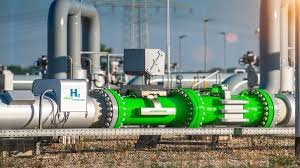Hanoi Declared World’s Most Polluted City: A Growing Environmental Crisis
Hanoi, the capital of Vietnam, has recently been declared the world’s most polluted city, surpassing other major cities in terms of air quality. The city has been grappling with severe air pollution issues that have posed health risks to millions of residents. According to data from global air quality monitoring platforms, Hanoi recorded some of the highest levels of particulate matter (PM2.5) in the world. PM2.5 particles, which are smaller than 2.5 micrometers in diameter, are known to penetrate deep into the lungs, causing serious health problems such as respiratory diseases, heart problems, and even premature death.
The alarming air pollution levels in Hanoi have sparked widespread concerns among environmentalists, policymakers, and the public. The city’s rapid urbanization, coupled with a significant increase in vehicular emissions, industrial activities, and the burning of biomass for energy, has contributed significantly to the deteriorating air quality. The situation is particularly dire during the winter months when the air is stagnant, and pollution levels reach their peak. These conditions are not only harmful to human health but also damage the environment, exacerbating climate change.
Government and Community Response to the Pollution Crisis
In response to the growing air pollution crisis, the Vietnamese government has initiated a series of measures aimed at improving air quality in Hanoi. These measures include stricter emissions regulations for vehicles, promoting the use of electric vehicles, and investing in clean energy alternatives. Additionally, the government has launched awareness campaigns to educate the public on the dangers of air pollution and encourage behaviors that can help mitigate its effects, such as reducing the burning of biomass and adopting sustainable agricultural practices.
While these efforts are a step in the right direction, experts argue that more stringent actions are needed to tackle the root causes of pollution in Hanoi. It is essential to focus on long-term solutions, such as improving public transportation systems, reducing industrial emissions, and enhancing waste management practices. A collaborative effort between the government, industries, and citizens will be critical to creating a healthier and more sustainable environment in the city.

Why this News is Important
Health Impacts of Air Pollution in Hanoi
The news of Hanoi being declared the world’s most polluted city is crucial for several reasons, with the most important being its direct impact on public health. The high concentration of PM2.5 particles in the air has significant health implications for the population, especially for vulnerable groups such as children, the elderly, and individuals with pre-existing health conditions. Prolonged exposure to poor air quality can lead to chronic respiratory issues, cardiovascular diseases, and other serious illnesses, increasing the burden on the healthcare system.
Global Environmental Concerns and Policy Implications
Hanoi’s pollution crisis also has broader environmental implications. The city’s pollution contributes to global climate change, as the emissions from vehicles and industrial sources increase the concentration of greenhouse gases in the atmosphere. Furthermore, the crisis highlights the urgent need for international collaboration on environmental sustainability. By addressing Hanoi’s pollution issues, Vietnam can set an example for other developing countries facing similar challenges.
Raising Awareness for Sustainable Development
This news story also sheds light on the importance of sustainable urban development. It calls for the need to balance economic growth with environmental protection. As Hanoi continues to grow, it must adopt green technologies and policies that will reduce its environmental footprint while improving the quality of life for its residents. This serves as a reminder that environmental issues should be integrated into long-term urban planning strategies to ensure sustainable and livable cities.
Historical Context
Urbanization and Industrial Growth in Hanoi
Hanoi’s rise to being the world’s most polluted city is a consequence of rapid urbanization and industrialization over the past few decades. The population of Hanoi has been steadily increasing, leading to higher demands for transportation, housing, and industrial goods. These factors have driven up the emissions of harmful pollutants, with traffic congestion and industrial activities being the primary contributors to air pollution.
Vietnam’s economic boom has been largely dependent on industries that release significant amounts of particulate matter into the atmosphere. While this economic growth has improved living standards in many ways, it has also placed immense pressure on the environment. In the past, cities like Beijing and New Delhi were infamous for their high pollution levels. However, Hanoi’s current status as the world’s most polluted city underscores the global nature of the air pollution crisis, as cities worldwide grapple with similar challenges related to industrialization, urbanization, and climate change.
Key Takeaways from “Hanoi Declared World’s Most Polluted City”
| Serial Number | Key Takeaway |
|---|---|
| 1 | Hanoi is the most polluted city in the world, with high levels of PM2.5 particles. |
| 2 | Air pollution in Hanoi poses serious health risks, including respiratory and cardiovascular diseases. |
| 3 | The primary causes of pollution include rapid urbanization, industrial emissions, and vehicular emissions. |
| 4 | The Vietnamese government is implementing measures to improve air quality, such as stricter emissions regulations and promoting electric vehicles. |
| 5 | Addressing Hanoi’s pollution will require long-term solutions, including sustainable urban development and green technologies. |
Important FAQs for Students from this News
1. What is the reason behind Hanoi being declared the most polluted city in the world?
Hanoi has been declared the world’s most polluted city due to high levels of PM2.5 particulate matter in the air, which is caused by rapid urbanization, industrial emissions, and vehicular pollution.
2. What are PM2.5 particles and why are they harmful?
PM2.5 particles are fine particles smaller than 2.5 micrometers that can penetrate deep into the lungs, leading to severe respiratory issues, heart diseases, and other long-term health problems.
3. What measures is the Vietnamese government taking to combat air pollution in Hanoi?
The Vietnamese government is implementing stricter emissions regulations, promoting electric vehicles, investing in clean energy alternatives, and raising public awareness about the harmful effects of pollution.
4. How does air pollution in Hanoi impact global environmental issues?
Hanoi’s pollution contributes to global climate change by increasing the concentration of greenhouse gases. It highlights the need for global collaboration in reducing pollution and promoting sustainability.
5. What are the health risks associated with prolonged exposure to air pollution in Hanoi?
Prolonged exposure to air pollution can lead to chronic respiratory diseases, cardiovascular issues, and even premature death, especially for vulnerable populations like children, the elderly, and those with existing health conditions.
Some Important Current Affairs Links


















